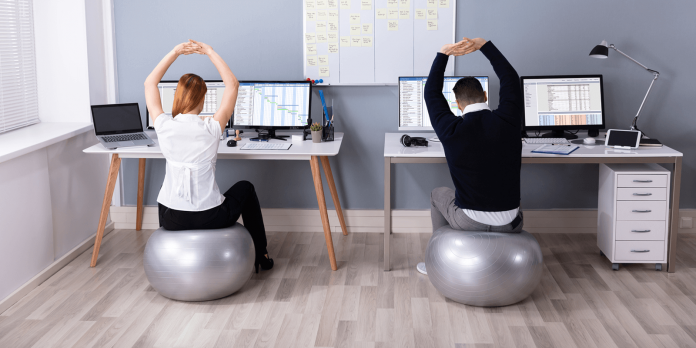How to Create a Healthy Home Office
Working from home is for many of us now ‘the new normal’ – at least for the time being – and this has brought a number of unexpected delights. Standing room only on the 7.30am train and nose-to-bumper traffic on the M25 are the challenges of past commutes for now.
But before you settle down, laptop open, with your first coffee of the day, it’s worth taking a few minutes to pay attention to your home office set up. For the vast number of people who have never worked from home, the ergonomics of a healthy workspace is the last thing on their minds. Working from a slouched position on a sofa or using a coffee table as a desk may not be an issue when using it once in a while, but when it’s on a daily basis, it can have a detrimental effect on your neck and back.
Added to that, the majority of us are now logging some record hours while at home, with some reports suggesting we’re working longer hours than ever. Computer usage is up by 41% after 6pm and overall device usage up by 53% between 6am and 6pm, according to this report. Clearly, when it comes to ergonomics, it’s never been more critical to ensure we’re doing everything we can to safeguard our wellbeing.
Here are four best practices that you can easily implement in your home workspace. They’ll help you improve your physical posture, reducing the likelihood of straining your neck and back.
1 – Correctly position your monitor
Spending too many hours glued to screens can result in eye strain. So wherever possible, position screens so that you’re working in indirect ‘soft’ white light, adjusting the text size and contrast of displays for maximum comfort.
Staying constantly focused on a screen can lead to eye – and mental fatigue. Every 30 minutes or so, take a moment to gaze at a distant object for 15 seconds. And when you take a five-minute break, take the opportunity to close your eyes and give them a complete ‘waking’ rest.
Not having a monitor correctly placed can also lead to neck strain, so ensure your monitor is positioned at eye level. It’s also important to practice small neck stretches from time to time, to ensure it doesn’t stiffen up.
2 – Adapt your seat
Not everyone will have the liberty of having an ergonomic desk chair at home. Also, it’s not as straightforward as purchasing one online either, as it’s always best to try the chair before you buy to check its comfort. However, you can adapt a dining room chair so that it offers great lumbar support and won’t lead to back pain. Adding pillows or, even better, lumbar supportive pillows to your chair can significantly support your back’s curve.
3 – Take a stand
As humans, we’re not designed to stay sedentary for long periods of time, so even if your workstation is set up the right way, it’s crucial to try and move every half an hour where possible, even if this means standing and stretching your back and arms. If you can, try and use a sit-stand desk, or even stand at the breakfast table while taking calls.
Introducing movement into your remote working schedule is crucial. So, alternate between sitting and standing – it’s important to move your muscles and be on your feet while at home. After all, you wouldn’t spend eight hours sitting continuously at work, so why should you at home? Allowing your back and shoulders to breathe and move positions is critical for supporting your posture and not letting them tense up.
Another way of escaping sitting at the desk is by taking regular five-minute breaks throughout the day. This is a great time to tackle a quick domestic-related task, such as loading the washing machine or making a coffee, or you can do some stretches. According to psychologists, taking regular breaks can help prevent decision fatigue and boosts overall productivity and energy levels.
4 – Accessorise wisely
Having a keyboard and mouse at your fingertips is much more significant than you may think, so ensure these essential accessories are on your desk. Just like your monitor, your keyboard should ideally be placed evenly with the height of your elbows and tilted back by 10° so that the wrists stay flat, reducing the potential for muscle strain. If you feel that you need additional support, ergonomic keyboard or mouse wrist supports can aid these and lower the chance of painful aching wrists, especially if you’re at your desk most of the day.





























